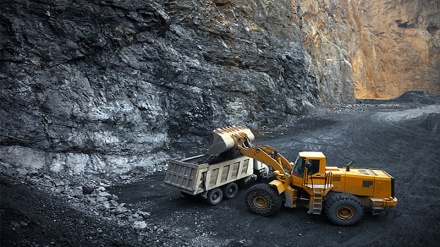Iranian Market (16)
Welcome to another episode of the Iranian Market. In this episode of our weekly program, we’re going to discuss about Iran's cement industry.
Cement is one of the important elements in building the economic infrastructures of countries. There is a direct relationship between the economic growth and annual consumption of cement in any country. Cement is called "leaven of development and economic growth".
In many countries, particularly in industrial ones, cement is considered as a strategic product. After 1980s, some economists presenting and applying composite index model started measuring development and economic welfare of countries. In Mc Granahan's composite index model presented for measuring economic growth and development, the rate of cement production was applied beside indices like humanitarian development, life expectancy, access to education and positive trade level.
In today's world, cement is one of the main construction materials and prerequisite for development and construction plans.
Cement is a soft powder which absorbs water. It is actually a binder that is used for construction that sets, hardens, and adheres to other materials to bind them together. Cement is seldom used on its own, but rather to bind sand and gravel together.
Cements used in construction are usually inorganic, often lime or calcium silicate based, and can be characterized as either hydraulic or non-hydraulic, depending on the ability of the cement to set in the presence of water.
Archeological discoveries and researches about the remains of ancient buildings shows that Romans were the first people who combined pozzolan with slaked lime. The mixture was used for building bridge, dam, pier, and alike.
Today nearly 30 types of cement are produced in the world. In 2015 more than four thousand million tons of cement was produced in the world, more than half of which was consumed in China.
China is the biggest consumer and producer of cement in the world. It is predicted that before 2020, the world annual consumption of cement increase by 640 kilograms.
In 2015, the Islamic Republic of Iran was among the ten producers of cement in the world.
Based on historical accounts, Iranians have a longstanding background in knowing and producing construction materials. Ancient monuments built in different regions of Iran is indicative of this fact.
Iran geographically is located in a region surrounded by calcareous mountains, therefore the ingredients for making cement is easy to access in this country.
In 1982, the first studies and researches for establishing the first cement factory in Iran started in this country. Then in the next five years, the first Iranian cement furnace with the capacity of one hundred tons per day located in Southern Tehran became operational.
Today, after passing of eight decades from the activities of cement factories in Iran, this industry is considered as one of the infrastructural industries of the Islamic Republic and is related to many of Iran’s industries and centers.
The importance of this product sources from the essential role of it in construction works.
Iran ranks first in producing the best quality cement in the world. Right now, more than 70 cement factories are actively working in Iran.
More than 20 thousand people, mostly experts are working directly in this industry. This industry has also provided for more than 120 thousand others, employment opportunities indirectly.
Iran exports cement to 27 countries across the world including Kuwait, Iraq, Afghanistan, Bangladesh and Ghana, with exports to Oman and Kuwait growing strongly.
The cement industry in Iran has grown dramatically in the last decade reaching more than 83 million tons annually which is about 165 percent of growth.
Iran’s cement industry has been constantly expanding and in recent years the status of Iran in the fields of production and exporting this product has been growing.
Despite global sanctions against the Islamic Republic, the cement industry has faced no problems for providing the basic materials and instead has continued the path to development.
AE/SS


